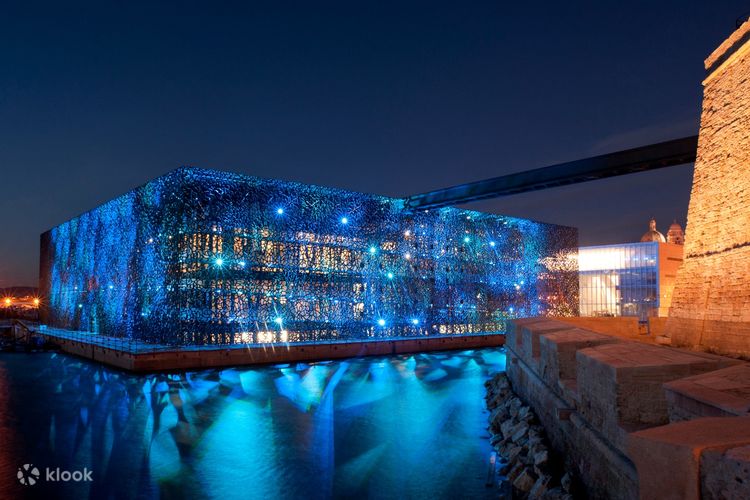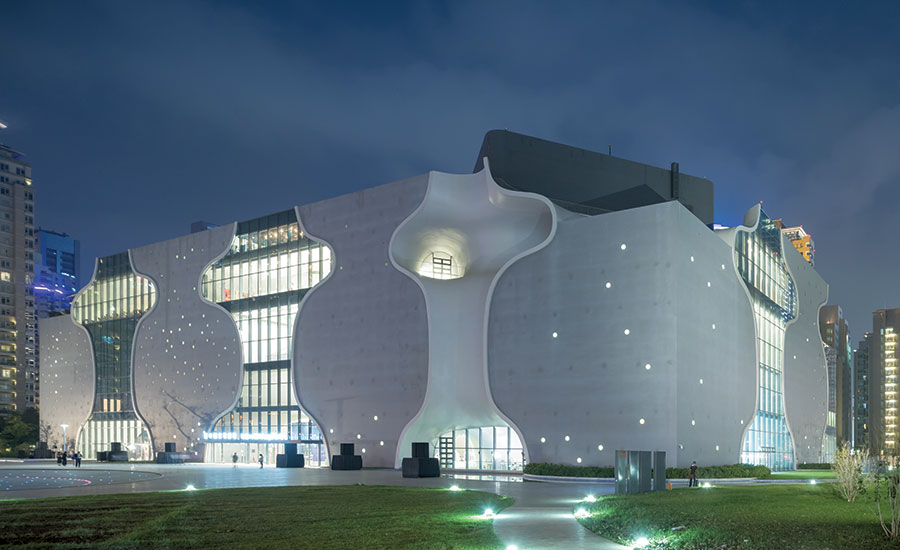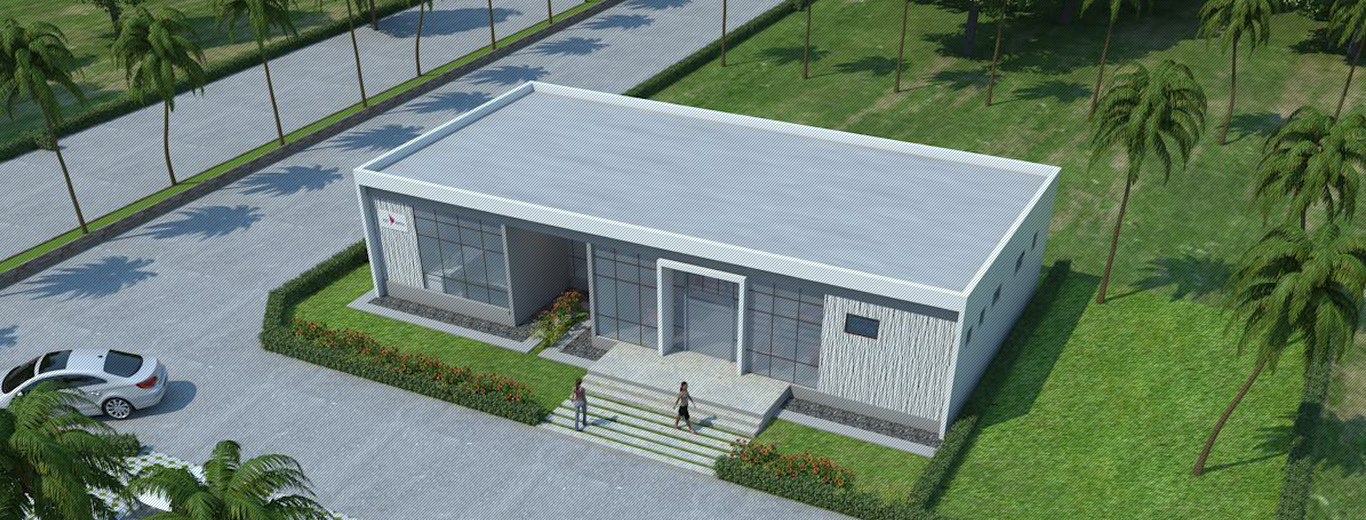Ultra-high-performance concrete, or UHPC, has very high strength, durability, and flexibility. It is made of cement, fine sand, silica fume, quartz flour, fly ash, water, fibers, and superplasticizers. UHPC can be used for various applications that require high performance and long service life, such as bridges, buildings, pavements, pipes, and cladding. However, UHPC is also expensive, complex, and sensitive to produce and handle. Therefore, it is important to use UHPC effectively and efficiently to justify its cost and overcome its problems.

Fig 1: Ultra-High-Performance Concrete
Courtesy: HiPer Fiber
Microstructure of Ultra-High-Performance Concrete (UHPC)
UHPC has a very low water-cement ratio and a very dense matrix, which makes it resistant to microbial attack. However, some studies have shown that certain bacteria can still colonize and degrade UHPC under certain conditions, such as high humidity, high temperature, and the presence of organic matter. Therefore, monitoring and controlling the microbiological activity in UHPC is necessary to prevent deterioration and corrosion.
The microstructure of ultra-high-performance concrete (UHPC) is the microscopic structure of the cementitious matrix and the interfacial transition zone (ITZ) between the matrix and the aggregates or fibers. Various factors, such as the type and proportion of the binder, the water-to-binder ratio, the type and dosage of admixtures, the curing conditions, and the environmental exposure, influence the microstructure of UHPC. The microstructure of UHPC can be characterized by using different techniques, such as scanning electron microscopy (SEM), X-ray diffraction (XRD), thermogravimetric analysis (TGA), mercury intrusion porosimetry (MIP), nuclear magnetic resonance (NMR), etc. These techniques can provide information about the morphology, composition, hydration, porosity, and connectivity of UHPC at different scales.
Some of the main features of the microstructure of UHPC are:
- The cementitious matrix of UHPC is very dense and homogeneous, with a low water-to-binder ratio and a high content of supplementary cementitious materials (SCMs), such as silica fume, fly ash, slag, etc. The SCMs can react with the calcium hydroxide produced by the hydration of cement to form more calcium silicate hydrate (CSH), which is the main binding phase in UHPC. The CSH can fill the pores and cracks in UHPC and improve its strength and durability.
- The ITZ of UHPC is very thin and strong, with a good bond between the matrix and the aggregates or fibers. The ITZ is usually the weakest link in conventional concrete, where cracks tend to initiate and propagate. However, in UHPC, the ITZ is improved by using fine and reactive aggregates or fibers that can reduce the interfacial porosity and increase the interfacial strength. The ITZ can also benefit from the self-desiccation effect of UHPC, which can reduce the internal stresses and shrinkage in UHPC.
- The pores of UHPC are very small and isolated, with a low porosity and a high tortuosity. The pores are mainly formed by the entrapped air bubbles or the water evaporation during curing. The type and dosage of superplasticizers or fibers used in UHPC can also affect the pores. The pores can influence the transport properties and durability of UHPC. For example, smaller and fewer pores can reduce the permeability and diffusion of UHPC to harmful agents, such as chloride ions or carbon dioxide.
Factors Affecting Ultra-High-Performance Concrete (UHPC)
Some of the factors that affect the use of UHPC are:
- Admixtures
UHPC requires the use of special admixtures to achieve its high performance. These include superplasticizers that reduce the water demand and increase the workability of UHPC, fibers that enhance the tensile strength and ductility of UHPC, and supplementary cementitious materials (SCMs) that improve the durability and sustainability of UHPC. However, these admixtures have drawbacks, such as high cost, limited availability, environmental impact, and compatibility issues with other components. Therefore, selecting and optimizing the type and dosage of admixtures for UHPC according to the specific application and requirements is important.
- Cost
UHPC is more expensive than conventional concrete due to its high material cost, high labor cost, high energy consumption, and high-quality control. The price of cement, fibers, SCMs, and superplasticizers mainly influences the material cost of UHPC. The labor cost of UHPC is mainly affected by the worker’s skill level, training, and safety measures. The energy consumption of UHPC is mainly related to the mixing, curing, and transportation processes. The quality control of UHPC is mainly dependent on the testing methods, equipment, and standards. Therefore, it is important to reduce the cost of UHPC by using alternative or recycled materials, improving production efficiency and automation, enhancing design optimization and innovation, and adopting appropriate quality assurance systems.
- Problems
UHPC may encounter problems during production and application due to its high sensitivity and complexity. Some of these problems include segregation, bleeding, cracking, shrinkage, creep, autogenous healing, thermal expansion, fire resistance, bond strength, fatigue behavior, impact resistance, abrasion resistance, etc. Therefore, it is important to solve these problems by adjusting the mix proportion and composition of UHPC, applying proper curing methods and conditions, using adequate reinforcement and prestressing, applying suitable surface treatments and coatings, conducting comprehensive tests and evaluations, etc.
Case Studies of Using UHPC as Cladding
Some examples of using UHPC as cladding are:
- The Shawnessy Light Rail Transit Station in Calgary
The Shawnessy Light Rail Transit Station in Calgary used UHPC panels as cladding for its roof structure. The panels were designed to have a thin cross-section (25 mm) and a large span (up to 9 m) to create a lightweight and elegant appearance. The panels were also designed to have a curved shape to provide solar shading and rainwater collection. The panels were fabricated off-site using self-consolidating UHPC with steel fibers.

Fig 2: The Shawnessy Light Rail Transit Station in Calgary
Courtesy: The Construction Specifier
- The Museum of European and Mediterranean Civilisations (MuCEM) in Marseille
The Museum of European and Mediterranean Civilisations (MuCEM) in Marseille used UHPC panels as cladding for its facade and roof. The panels were designed to have a perforated pattern that creates a lace-like effect that filters light and views. The panels were also designed to have a dark color that blends with the sea and the sky. The panels were made of Ductal UHPC with steel fibers.

Fig 3: The Museum of European and Mediterranean Civilisations (MuCEM) in Marseille
Courtesy: Klook
- The National Taichung Theater in Taiwan
The National Taichung Theater in Taiwan used UHPC shells as cladding for its curved walls and ceilings. The shells were designed to have a complex geometry that follows the concept of “sound caves.” The shells were also designed to have a gray color that matches the concrete structure of the building. The shells were cast on-site using UHPC with steel fibers.

Fig 4: The National Taichung Theater in Taiwan
Courtesy: Architectural Record
Conclusion
Despite its renowned strength and durability, Ultra-High-Performance Concrete (UHPC) encounters challenges like microbial threats and cost constraints. Addressing these concerns requires intelligent use of admixtures, continuous monitoring, and innovative problem-solving. Nevertheless, UHPC’s transformative potential shines in projects like the Shawnessy Light Rail Station and MuCEM, establishing a model for innovative and resilient construction.
References
- https://www.cement.org/learn/concrete-technology/concrete-design-production/ultra-high-performance-concrete
- https://research.tue.nl/en/publications/development-of-an-eco-friendly-ultra-high-performance-concrete-uh
- https://premierprecast.com/ultra-high-performance-concrete/
- https://www.iastatedigitalpress.com/uhpc/article/16705/galley/15098/view/
- https://www.wiley.com/en-us/Ultra+High+Performance+Concrete+UHPC:+Fundamentals,+Design,+Examples-p-x000736153
- https://fehrgroup.com/en/cladding-panels/
- https://www.degruyter.com/document/doi/10.1515/ntrev-2020-0107/html
- https://doi.org/10.1515/ntrev-2020-0107
- https://ijcsm.springeropen.com/articles/10.1007/s40069-016-0157-4

